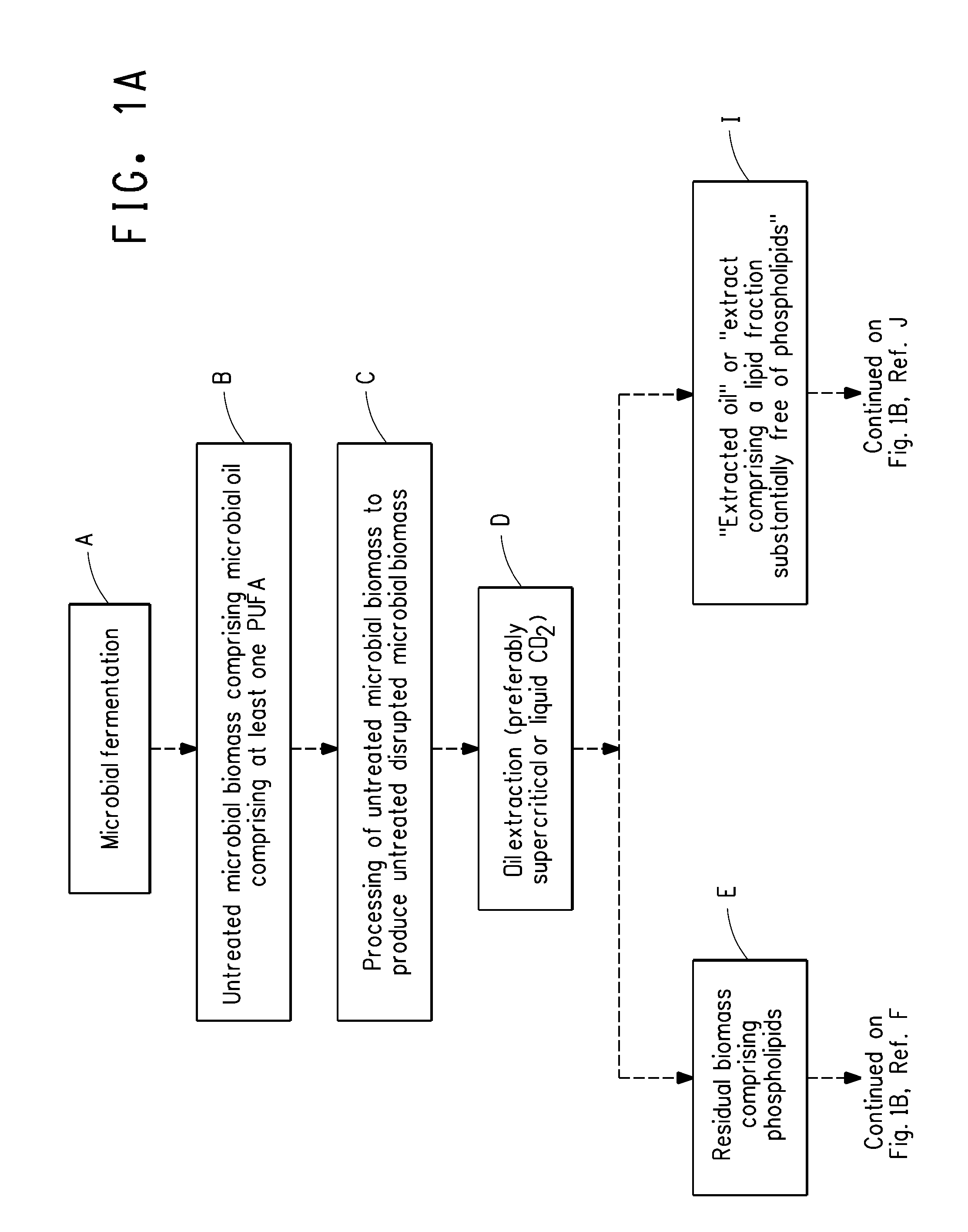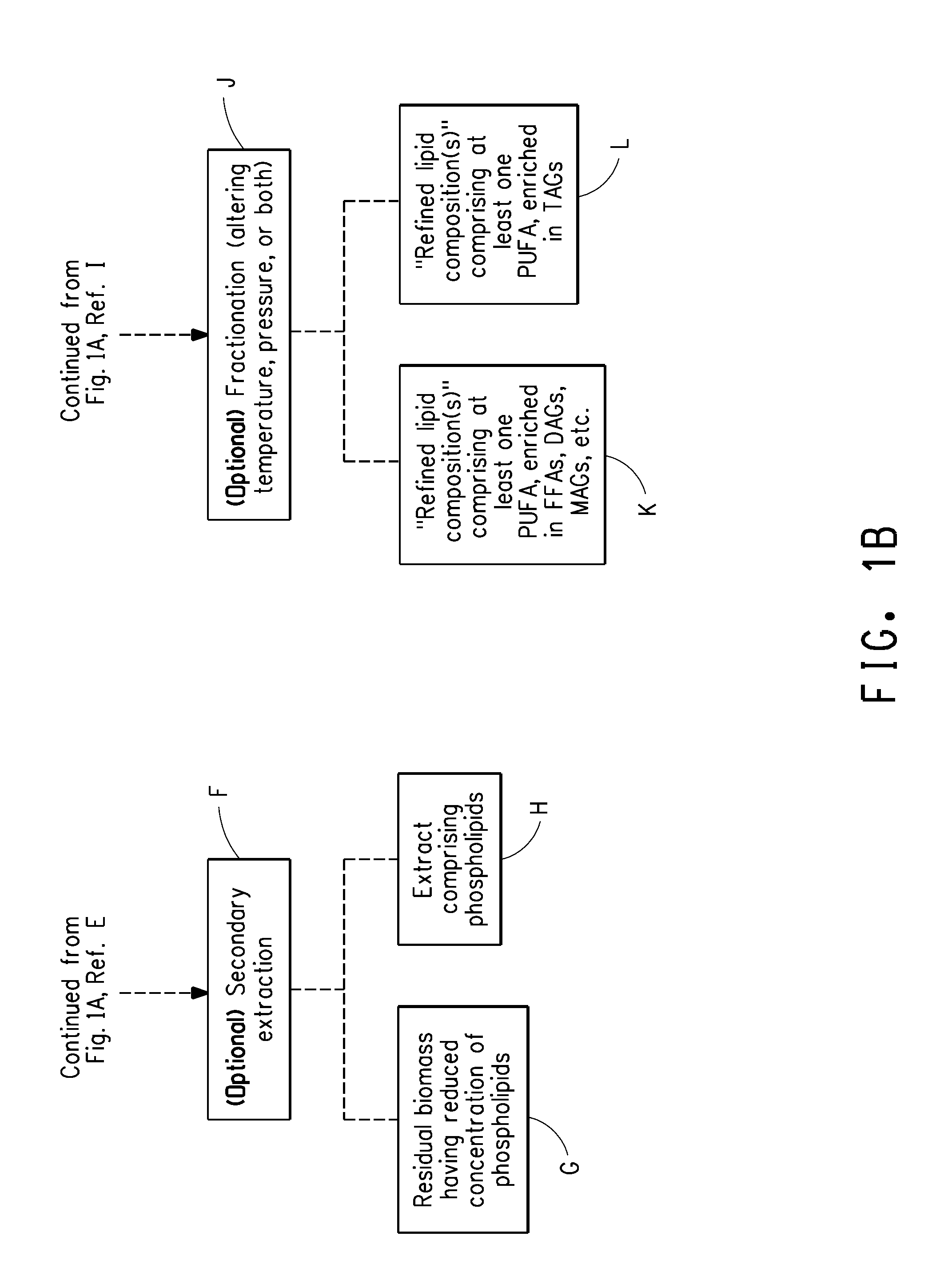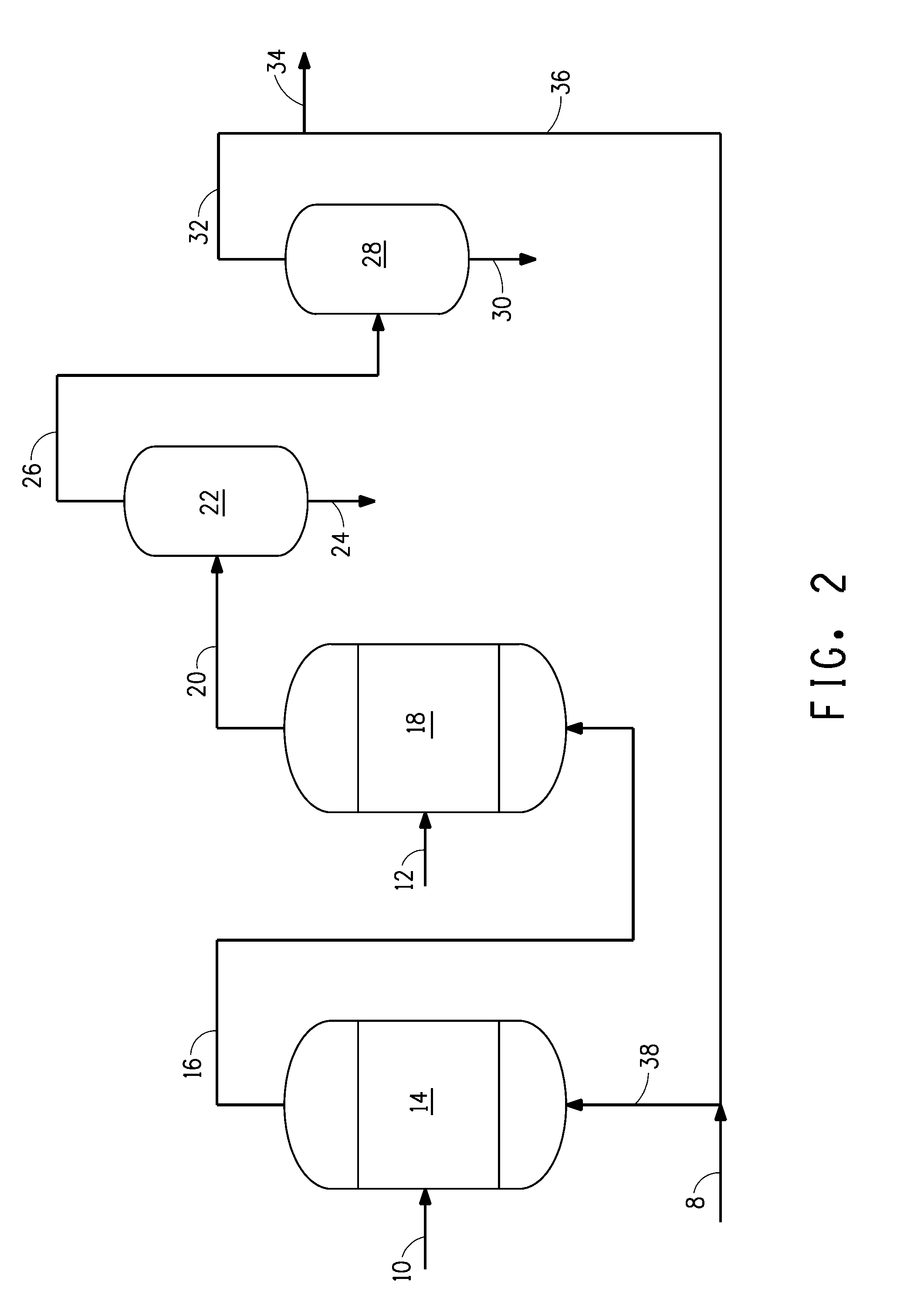Method for obtaining polyunsaturated fatty acid-containing compositions from microbial biomass
a technology of microbial biomass and composition, applied in the direction of fatty-oil/fat separation, animal repellents, biocide, etc., can solve the problem of oxidative instability of lipid compositions of pfa-containing lipids
- Summary
- Abstract
- Description
- Claims
- Application Information
AI Technical Summary
Benefits of technology
Problems solved by technology
Method used
Image
Examples
example 1
Extraction Curve at 311 Bar and 40° C.
[0181]The purpose of this Example was to demonstrate generation of an extraction curve. An 8-mL extraction vessel fabricated from 316 SS tubing (0.95 cm o.d.×0.62 cm i.d.×26.7 cm long) was repeatedly charged with nominally 2.7 g of dried and mechanically disrupted yeast cells of Yarrowia lipolytica strain Y8672 (i.e., microbial biomass) for a series of extractions to determine the extraction curve for this microbial biomass at 40° C. and 311 bar. For each extraction, the extraction vessel and microbial biomass were flushed with CO2 and then pressurized to 311 bar with CO2 at 40° C. The microbial biomass was extracted at these conditions and a CO2 flow rate of 1.5 g / min for various times to give a range of solvent-to-feed ratios resulting in a corresponding extraction yield, as shown in Table 4.
TABLE 4Solvent To Feed Ratio And ExtractionYield Data At 311 Bar And 40° C.Specific SolventExtractionRatioYield(g CO2 / g Yeast)(wt %)6.05.56.06.26.04.710.9...
examples 2-4
Lipid Fractionation by Sequential Pressure Extraction
[0190]The purpose of Examples 2, 3 and 4 was to demonstrate sequential pressure extraction of microbial biomass under various extraction conditions and to provide the lipid compositions of the extracted oils obtained.
[0191]Examples 2, 3 and 4 collectively illustrate that partitioning of the lipid components of the extracted oil can be influenced by the selection of the extraction conditions in a multi-step extraction. Such partitioning would likewise result from a sequential reduction of pressure of the extracted oil obtained by a process as illustrated in FIG. 3.
[0192]These results obtained in Examples 2, 3 and 4 are expected to be similar to the results which could be obtained by SCF CO2-extraction of the microbial biomass, wherein the extracted oil is subsequently fractionated via stepwise pressure reduction.
example 2
125 Bar to 222 Bar
[0193]An 18-mL extraction vessel fabricated from 316 SS tubing (1.27 cm o.d.×0.94 cm i.d.×26.0 cm long) was charged with 3.50 g of dried and mechanically disrupted yeast cells of Yarrowia lipolytica strain Y8672 as the microbial biomass.
[0194]Extract A: The microbial biomass was flushed with CO2, then heated to 40° C. and pressurized to 125 bar. The microbial biomass was extracted at these conditions at a flow rate of 2.3 g / min CO2 for 5 hrs, at which time the pressure was increased to 150 bar. The extraction was continued for an additional 1.2 hrs, giving a final solvent-to-feed ratio of 238 g CO2 / g yeast. The yield of Extract A was 11.7 wt %.
[0195]Extract B: The extraction was continued with the same partially extracted microbial biomass by increasing the pressure to 222 bar and continuing the CO2 flow at 2.3 g / min for 4.0 hrs, giving a final solvent-to-feed ratio of 153 g CO2 / g yeast for this fraction. The yield of Extract B was 6.2 wt % of the original microbia...
PUM
| Property | Measurement | Unit |
|---|---|---|
| Temperature | aaaaa | aaaaa |
| Temperature | aaaaa | aaaaa |
| Temperature | aaaaa | aaaaa |
Abstract
Description
Claims
Application Information
 Login to View More
Login to View More - R&D
- Intellectual Property
- Life Sciences
- Materials
- Tech Scout
- Unparalleled Data Quality
- Higher Quality Content
- 60% Fewer Hallucinations
Browse by: Latest US Patents, China's latest patents, Technical Efficacy Thesaurus, Application Domain, Technology Topic, Popular Technical Reports.
© 2025 PatSnap. All rights reserved.Legal|Privacy policy|Modern Slavery Act Transparency Statement|Sitemap|About US| Contact US: help@patsnap.com



